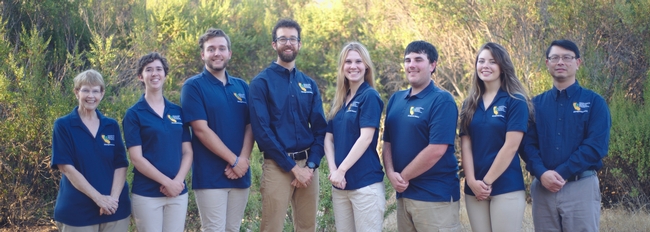The California 4-H Management Board is a youth-adult partnership at the highest level of California 4-H. As with all impactful roles, we face our share of challenges. Two challenges we're digging into right now are:
- Making participation in the management board more successful for youth
- Increasing the level of youth voice present in all our decisions
The management board bylaws say that at least half of our ten director positions (Article II, § 1a) and half of our committee membership (Article V, § 5a) should be filled by youth. In the inaugural year of the management board, we had three youth directors, and this year we have zero: We received no applications from current youth members for our three open director positions this year. We currently have 36 youth and 30 adults on our committees, though not every committee has a 1:1 or higher ratio of youth to adults.
Challenges in our team structure
The youth members of the director team during our first year reported that the position was particularly challenging. Our team structure required members to be very self-directed. While initiative is no strange concept to 4-H youth, the management board had very little historical context on which to draw. Similarly, role expectations weren't very clear, because they were speculative. The implementation committee that designed the management board structure couldn't know exactly how individual responsibilities and team goals would shake out. Being a director involves overseeing committee chairs who are often adults. This is a dynamic that many youth, even among 4-H'ers, haven't experienced yet, and was cited as a challenge.
How the management board plans to support youth participation
We have been doing some critical self-reflection to understand why director roles are challenging for youth, and how we can better promote the valuable opportunity of serving in one of these positions. We listened to feedback from our first youth chairs; we did an internal evaluation (see here for more on that); we reviewed the research on youth engagement and youth voice; and a small group of us synthesized this into a set of specific changes to make and points on which to double down. These are our current focus areas for improving youth participation and voice on the management board.
- Expect high quality youth-adult partnerships. Every team (directors, standing committees, event planning teams) within the management board will use Hart's Ladder to be mindful of developing strong youth-adult partnerships.
- Create a pipeline for youth members. We will help youth management board committee members prepare for larger leadership roles over time. We will help youth plan for positions on the management board as a pinnacle 4-H leadership experience, much like becoming a State Ambassador.
- Be more visible. We're making a point of being present at area and state events and finding ways to broaden our communications.
- Make youth directorship manageable. This one is challenging. We are considering ideas like having a coach for each youth director and having youth/adult co-directors. We proactively avoid the need for tribal knowledge so that new directors can quickly get up to speed. Part of this is creating role binders with processes for managing existing events, and for creating new programs.
- Prioritize youth voice in decisions. We're actively working to prevent poor youth-adult partnership strategies like tokenism and manipulation (see Hart's Ladder) and educating our directors and committees to recognize them. Our youth directors and youth committee members are our primary representatives of 4-H'er voice. When developing plans, like our proposal for the transition from sectional conferences to area Youth Summits, we will use tools like focus groups for broader youth inclusion.
4-H is powerful in part because it is youth-led
As the management board develops, we're committed to designing for inclusion. We'll re-evaluate over time and hope to arrive at a better place soon.
You can see this article in its original form and comment on it in Curtis's Facebook post (You do not have to have a Facebook account to read the post, but you will have to log in to Facebook to comment.)
